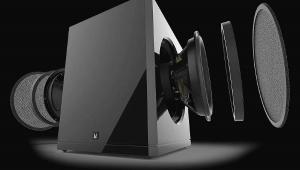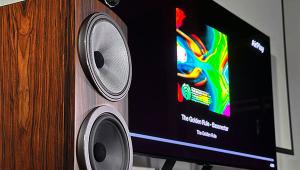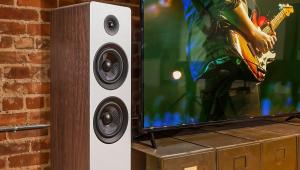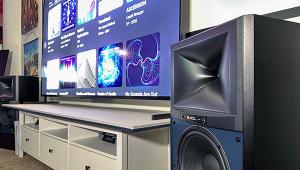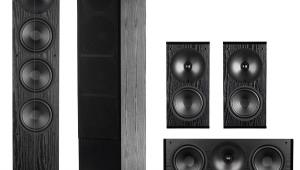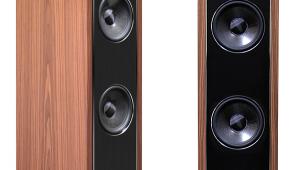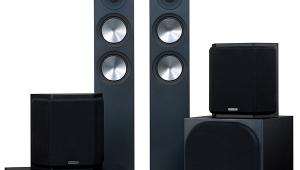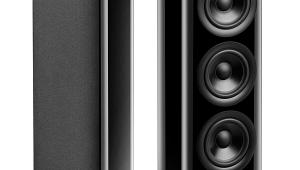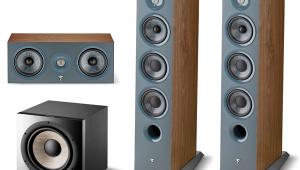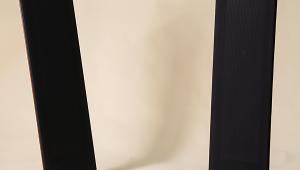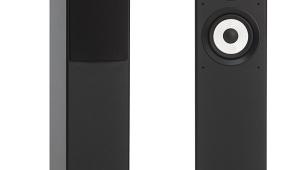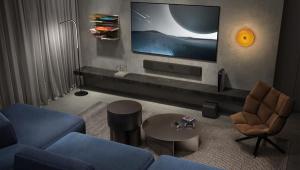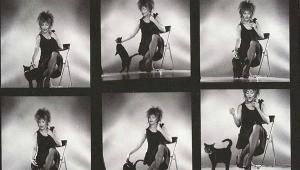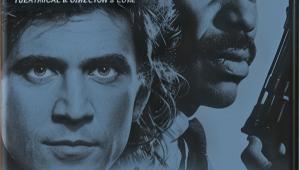PSB Synchrony T600 Loudspeaker Review Page 2
Music Performance
All the source material I used for my evaluation was lossless and from discs, including CD, Blu-ray, and Ultra HD Blu-ray. The players were an Oppo UDP-203 for movies and a Marantz UD7007 for stereo music. I spent most of my time listening to the PSB Synchrony T600s driven full range, primarily as described above and with no subwoofers.
The T600's bass was astonishing. Its performance was certainly helped by the clarifying effects of Audyssey room correction below 300Hz but removing any bass lumpiness contributed by the room was all fair and no foul. The speakers extended powerfully down to 30Hz at my listening seat before rolling off rapidly below that point (the latter partially from the T600's natural response but assisted by the Audyssey Editor App where I had further rolled off response below 30Hz to avoid overdriving the PSBs in my very large room).
As usual for speaker reviews, I cued up my trusty bass-testing compilation CDR offering a wide range of low frequency challenges including vigorously struck Taiko drums, electronica, organ played in a reverberant church, and more. Since drums rarely extend below the T600's 30Hz limit, they were no challenge for the PSBs, which rendered them as clear and tight while thumbing their noses at my silent, unused subwoofers. The rolling bass in Bela Fleck's "Flight of the Cosmic Hippo" was clean and deep, and the standup bass on other cuts sounded precise without undue emphasis as it was plucked or bowed up and down its range. Organ with few exceptions (this is one instrument that does extend below 30Hz) sounded appropriately rich and powerful.

No, the PSBs alone didn't generate bass that ruffled my pants legs or sock me in the gut when hearing kick drums. But this came as no surprise, and if you didn't know that a source contains true deep bass (such as the 16Hz rumble from the bottom organ pedal captured in some recordings of the Saint-Saëns Symphony No.3), you'd never miss it. Also, the PSBs provided as convincing a simulation of these typically subwoofer-provided thrills as any other standalone speakers I've used in my large viewing/ listening room.
The performance of the PSBs higher up the frequency range—untouched by Audyssey EQ— left little to be desired, clearly fleshing out delicate and dynamic percussive elements, from the lightly struck ride cymbal on the Dave Brubeck Quartet's "Take Five" (still a reference-quality recording decades after it was first produced) to the overtones of the opening bass riff on Toto's "I Will Remember." While my measurements showed the high frequency response tapering off above 3kHz, the sound was never dull. I did occasionally hit +1 on the Denon's Treble control depending on the source, but both the objective and subjective effects of that tweak were at best subtle.
Close-miked but well- recorded male vocals from the King's Singers ("The Boxer" and "Father to Son") and Elvis ("Fever," complete with obvious but appropriate reverb complementing The King's resonant voice) were consistently gripping. Female vocals such as Loreena McKennitt's on Nights from the Alhambra, long a personal favorite, kept me glued to my seat even more than before. Soundstaging and imaging depth, when present on these and a wide range of other recordings, fully supported the music.
During my test, I noticed that the Denon AVR became uncomfortably hot to the touch when feeding challenging material to the Synchrony T600s at high volume levels. I suspect this is because the speaker, which has a 4 ohms minimum impedance rating, presents a relatively challenging load to an amplifier. I also heard a trace of overload in the right channel on a few challenging cuts. But this was barely audible and never alarming, and it may have resulted from less than earth-shattering power of the Denon AVR, which is rated at 140Wpc into 8 ohms, two channels driven. There was also the matter of the right speaker's physical location: While the left speaker in my setup sits about 4 feet from the wall, the right one adjoins a fully open kitchen and dining area, a room-related factor that makes its job more challenging.
Adding a pair of SVS PB-3000 subwoofers to the PSBs and crossing them over at 80Hz (both high- and low-pass filtered) extended the bass in my room with specific, highly challenging material. But the improvements weren't always dramatic. Organ went deeper, with that quietly played 16Hz pedal note in the Saint-Saëns symphony mentioned above now just barely sensed. Drums were more powerful with the subwoofers connected though minor reductions to the Denon's Bass control and/ or the subwoofer level were necessary to keep the result from sounding overcooked.
Movies Performance
If your taste in films is limited to dramas like Victoria & Abdul, Anonymous, and Their Finest (three of my favorites when I'm not in the mood for explosions), you'll likely be perfectly happy with the Synchrony T600s minus subwoofers, and even more so if your room is average-sized or small. At present, the new Synchrony lineup consists of the T600 towers and B600 bookshelf speakers. PSB plans to add a dedicated center channel model to the line at some point, though not in the near future according to the company.
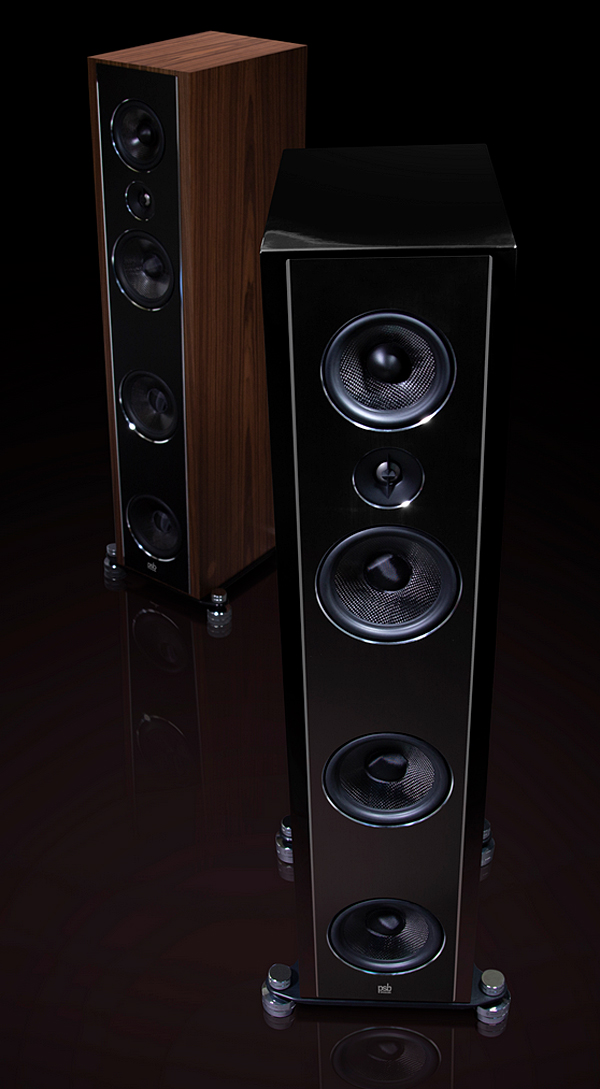
To get a sense of the T600's performance with movies, I added the pair of SVS PB-3000s subwoofers to the mix along with Revel Concerta S12s in bipole mode for surrounds plus four PSB Alpha P3 bookshelf models serving as overhead Atmos speakers. Initially leaving my Monitor Audio center speaker off, I used the Synchrony T600s to generate a phantom center channel at my middle seat.
Adding the SVS subwoofers extended the system's deepest bass and lightened the load on both the amps and the PSBs. In this setup, the T600s overall did a good job on Trolls, chosen for its dialogue and music, and Blade Runner 2049 and Live, Die, Repeat (Edge of Tomorrow), which I selected to assess their dynamic range and handling of chaotic action.
But the phantom center generated by the two T600s also proved overly dominant, producing an unpleasant forwardness that I didn't hear from the speakers with stereo music. I have no good explanation why this was happening, but it may be in the way movies (or at least the movies I sampled) are mixed. When I replaced the PSB phantom arrangement with my usual Monitor Audio Silver center speaker and adjusted the center level (adjusting the level of a phantom center, either up or down, isn't possible), everything fell back into place. (As mentioned above, a new Synchrony center speaker is on PSB's to-do list.)
Conclusion
Although it took effort to effectively dial-out some issues with my room during this review, doing so fully revealed the superb performance the PSB Synchrony T600 is capable of. With its clear, dynamic sound and deep-reaching bass, listeners with feet in both the stereo music and home theater camps will be well-served by this revamped version of the company's flagship. At $7,999/ pair, the T600s aren't exactly an impulse buy. But on the flip side, speakers priced two to three times as much are unlikely to perform significantly better. You can take that to the bank.
